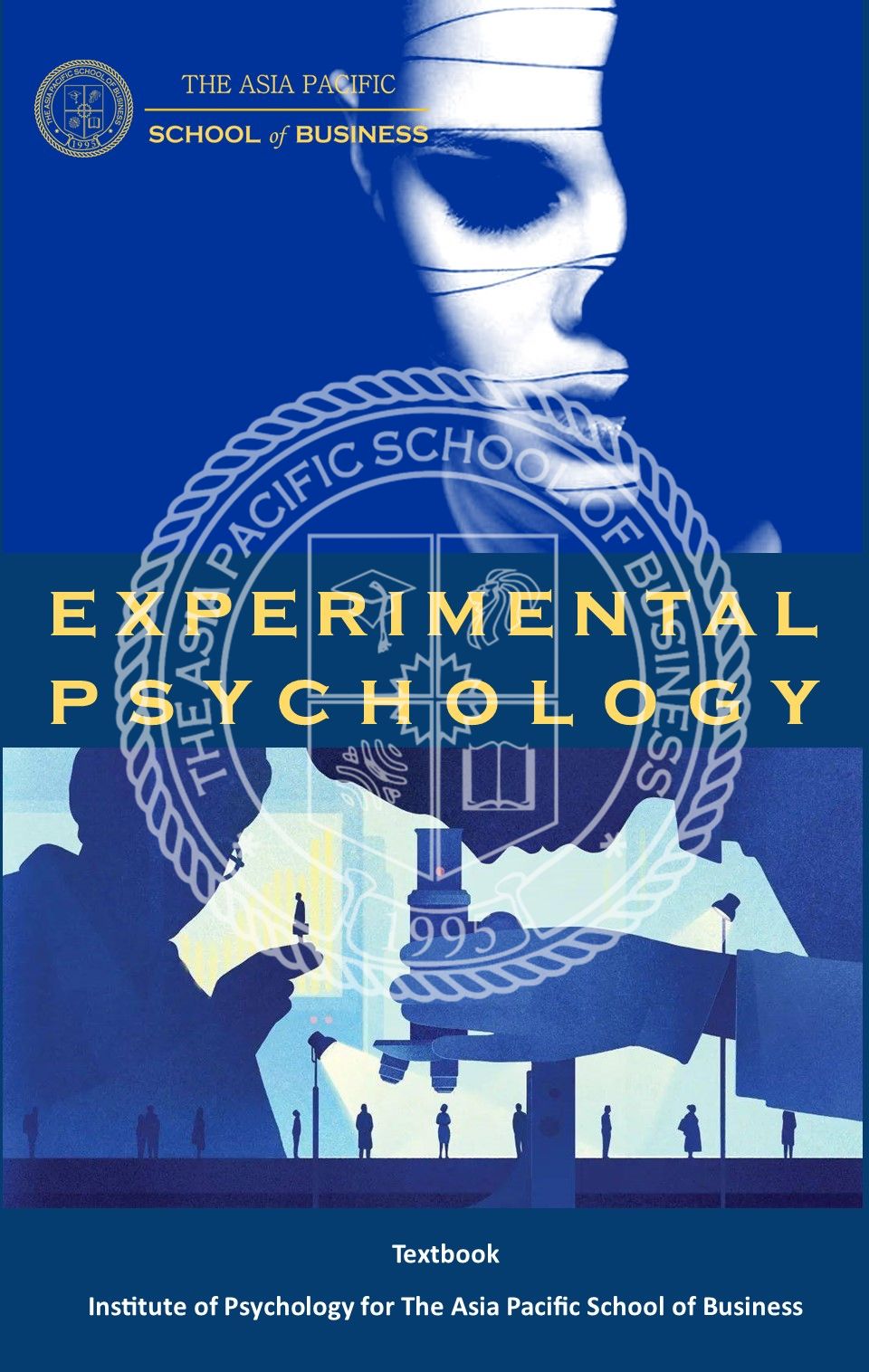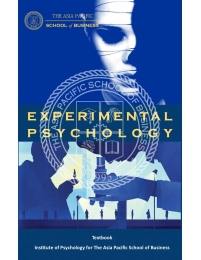
出版社:亚太商学院心理学研习所
副标题:
原作名:Experimental Psychology
译者:金美花、杨婉宸、张军等
出版年:2015-01
ASIN:AP201502025(内刊)
ISBN:
作者简介
Dr David Belin is a Lecturer in Behavioural Neuroscience at the Department of Psychology of the University of Cambridge. He developed the first preclinical model of cocaine addiction based in the multiple clinical criteria as defined in humans. He also investigated the corticostriatal mechanisms of cocaine seeking habits and the relationships between impulsivity and compulsive cocaine self-administration, leading to a breakthrough in our understanding of the neurological and psychological mechanisms subserving individual vulnerability to cocaine addiction. Dr David Belin has authored over 50 publications and received the Mémain-Pelletier Award from the French Academy of Science and the Young Investigator Award from the European Behavioural Pharmacology Society.
内容简介
Experimental psychology is one of the most basic courses for psychology majors. It has local significance for the formation of students' important psychological research ideas and the learning of subsequent courses.
The teaching and learning of the course is divided into two parts: Theory and experiment. The experiment complements each other and teaches synchronously, It is an indispensable subject for psychology teaching and scientific research.
Experimental psychology can be divided into broad sense and narrow sense. Experimental psychology in a broad sense is a psychological system relative to humanistic orientation, also known as scientific psychology. In a narrow sense, experimental psychology is a science that studies the basic theory and technology of psychological experiment and introduces the experimental research results in various branches of psychology. Its development history can be roughly divided into:
Philosophical speculative stage
Before the 19th century, most of the problems of psychology were discussed in the field of philosophy, using the methods of speculation and empirical generalization. At that time, there was a belief that the experimental method was not applicable to the study of psychological phenomena. After the Renaissance, the trend of materialism philosophy and the development of Natural Science in Europe bred the birth of experimental psychology at the end of the 19th century.
The former, such as materialist empiricism initiated by Locke, Hartley's associationism and Latin American mechanical materialism, etc; The latter, such as the research on nerve conduction in physiology, the debate on the localization of brain function, the establishment of the theory of neural special energy, the theory of evolution in biology, the atomism in chemistry, and the establishment of various laboratories in universities.
Experimental application stage
Although Weber measured the two-point threshold and the weight difference threshold in 1834, fischner put forward the unique research method of Psychology - psychophysical method in the outline of psychophysics in 1860, and James established a psychology laboratory for demonstration at Harvard University in 1875, due to von ter's organization and promotion of the study of psychology by experimental method, Therefore, people still regard his establishment of the first research psychology laboratory at Leipzig University in Germany in 1879 as a sign that psychology has differentiated from philosophy and become an independent discipline, and von der is called the founder of experimental psychology.
Wundt and his student tieqinna believe that psychology should study people's direct experience. What psychology wants to seek is how to decompose consciousness into the simplest and most basic elements. In order to achieve this goal, their psychological experiment is to analyze the content of consciousness into psychological elements by introspection under controlled conditions and by direct experience.
They argue that only after strict training can a person act as a subject. What the subjects want to describe is the state of consciousness caused by the stimulus, not the stimulus itself, otherwise they have made a "stimulus mistake". They believe that all feelings have the following basic characteristics: quality, intensity, ductility, continuity and clarity. In order to ensure clear experience and accurate report, experiments must be carried out, because experiments are not only carried out under controlled conditions, but also repeatable. The more times the experiment is repeated, the clearer the experience is and the more accurate the description of the experience is.
However, when the psychological process is going on, trying to report the change of consciousness will interfere with the state of consciousness at that time. In order to overcome the difficulty of introspection, the method of recall is often used. Only the subject who has developed the habit of introspection can memorize or take notes during observation without disturbing his consciousness. Wundt also believes that the experimental method is only suitable for studying basic psychological processes, such as feeling and association. For advanced psychological processes, such as memory, thinking, social psychology and personality, we can only explore them by observation or by studying the history of human nature. Therefore, he wrote national psychology.
The development of experimental psychology
Wundt
Although experimental psychology began in Germany, not all psychological experiments in Germany were carried out in the way of Wundt. After Wundt pointed out that the advanced psychological process could not be studied by experiment, Ebbinghaus first studied the problems of learning and memory by experiment. He created meaningless syllables, took meaningless syllables as experimental materials, made his own subjects, and checked the storage amount at different intervals after memorization with the saving method. This not only expands the research scope of experimental psychology, but also changes Vogt's traditional psychological experimental method of analyzing the content of consciousness. In addition, vont's student Qu erpe was inspired by Ebbinghaus's experimental study of memory, so he believed that the thinking process could also be studied by experimental methods. But he didn't get rid of introspection, but his introspection was different from that of Wundt. He asked the subjects to complete a task first, and then reflect on the experience gained during the completion of the task. The subjects didn't know what to observe in advance, only knew to try to complete the assigned task. For example, ask the subject to solve a problem, and then ask him to state how he thinks step by step and how to solve the problem. Through experiments, he found that not all experiences are composed of sensory images, and thinking can occur without any feeling or image content, so he established the Wurzburg School of non image thinking.
Sandyk and Pavlov
After Darwin's "human and animal expressions" was published, although both romanis and Morgan studied animal psychology, most of their observations were carried out under natural conditions. It was only in sandyk that the study of animal learning was carried out under strictly controlled conditions. Sanddike founded the experimental method of connectionism.
His early experiments were carried out in a puzzle box, and the subjects were cats. He put the hungry cat in the puzzle box made of slats, and the food outside the puzzle box where the cat can see and smell. In order to open the door of the Mystery Box and eat food, the cat must pull the appropriate latch. At first, the cat touched and scratched until it happened to make the right response, opened the door and ate food. After many attempts, the wrong response gradually decreases, and the time required to open the door gradually shortens, until the cat immediately makes the correct response as soon as it is put into the puzzle box, and the learning is completed. This learning process that connects reaction and situation is sanddike's effect law, which sanddike calls "trial and accidental successful learning", and sometimes called "trial and error" learning in psychology books.
Pavlov's experimental method of conditioned reflex and sandyk's experimental method of trial and error learning were established almost at the same time. A typical conditioned reflex experiment is to combine a stimulus (such as light) unrelated to causing a certain reaction (such as salivation) with a stimulus (such as food) that can cause the reaction for many times. If an animal secretes saliva at the sight of light, the conditioned reflex is formed.
Sandyk and Pavlov developed experimental methods on animal learning, which linked specific situations with specific reactions. The difference lies in that the scene associated with a certain reaction in Pavlov's experiment is presented by the subject, while the scene in sandyk's experiment is accidentally discovered by the subject. The former can be said to be the classical conditioned reflex method, while the latter is the pioneer of instrumental or operational conditioned reflex method. In the past, it was considered that classical conditioned reflex was only limited to the reflex response controlled by the autonomic nervous system, while instrumental conditioned reflex only studied the random response associated with skeletal muscle. However, Miller and others successfully trained subjects to control their heart rate, intestinal contraction and relaxation, EEG rhythm and so on.
wahson
Watson believes that psychology is a branch of natural science; Psychology studies not consciousness, but the behavior of people and animals; The purpose of studying psychology is to predict behavior, find out the law of behavior and control behavior. What he studies in the laboratory is something that can be observed objectively. He does not require human subjects to observe their own conscious experience, but the main test sets the experimental conditions and observes the subjects' reactions under these conditions. He denies human instinct and believes that all behaviors are conditional reactions formed in society. Therefore, conditioned reflex method has become the most important method for his psychological experiment.
The traditional view holds that the thinking process in the mind is difficult to observe and experiment. Watson regards thinking as an internal speech movement, and observes the thinking process by recording the movement of normal people's throat and tongue and the movement of deaf mute hands and fingers. Although he opposed introspection, he did not abandon verbal reporting, believing that it was also an objective act. In short, his experimental method is to observe the subject's response under controlled conditions and try to decompose the complex behavior into "stimulus response" units. On this point, he has not got rid of the stereotype of Constructivist elementalism.
Wittheimer
Wittheimer and others put forward the view that perception is not the sum of sensory elements, but a unified whole. This is the core of Gestalt psychology. The concept of Gestalt can be applied not only to sensory experience, but also to learning, memory, thinking and so on. In short, the whole is not determined by individual elements, while the part is determined by the internal nature of the whole. For example, if a tune composed of six tones is changed to another six tones under certain conditions, it can still be recognized as this tune. In other words, the basis for recognizing that tune is more than the sum of six tones, that is, the relationship between the tones. As long as the relationship remains the same, you can recognize the original tune. Therefore, the experimental method of Gestalt school is to try to find the structural principle of perception under the situation set by the subject.






